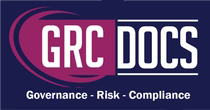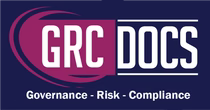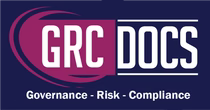SOC 2 Risk And Control Evaluation Strengthen Compliance And Audit Readiness
Introduction
Understanding and managing risks is crucial for any organization that deals with sensitive data. SOC 2, which stands for Service Organization Control 2, provides a framework for assessing and addressing these risks. In this article, we'll delve into the essentials of SOC 2 risk and control evaluation, helping you to better manage your organization's data security and compliance.

The Importance Of Risk Evaluation
Risk evaluation is the process of identifying, analyzing, and prioritizing risks that could potentially affect your business operations. In the context of SOC 2, risk evaluation is critical because it helps organizations:
-
Identifying System Vulnerabilities: Identifying vulnerabilities involves a comprehensive review of your organization's systems and processes. This includes examining both technical and human factors that could pose a risk. Regular vulnerability assessments and penetration testing are essential components of this process, allowing you to uncover potential weaknesses before they can be exploited by malicious actors.
-
Analyzing Risk Impact: Once potential vulnerabilities are identified, it's crucial to analyze their potential impact on your organization. This involves assessing both the likelihood of a risk occurring and the potential damage it could cause. By understanding the impact, organizations can prioritize which risks require immediate attention and resources, ensuring that the most critical threats are addressed promptly.
- Developing Risk Mitigation Strategies: Developing strategies to mitigate or eliminate risks is a key component of effective risk evaluation. This involves creating detailed risk management plans that outline the steps your organization will take to address identified risks. These plans should be dynamic, allowing for adjustments as new risks emerge and as the organization evolves. Regularly updating and testing these strategies is essential to ensure they remain effective in a changing threat landscape.
Implementing Risk Management Strategies
Once the risks have been evaluated, it's time to develop and implement strategies to manage them. Effective risk management involves:
-
Crafting Comprehensive Mitigation Plans: For each identified risk, create a mitigation plan outlining the steps your organization will take to reduce the likelihood or impact of the risk. Mitigation plans should be tailored to the specific needs of your organization and may include implementing new security protocols, updating software systems, or providing additional employee training.
-
Continuous Risk Monitoring: Risk management is an ongoing process. Regularly monitor and review the risks to ensure that your mitigation strategies are effective. This involves establishing key performance indicators (KPIs) to measure the success of your risk management efforts. Staying updated on new threats and adjusting your plans accordingly is essential for maintaining a strong security posture.
- Fostering a Culture of Training and Awareness: Educating your employees about the importance of risk management and SOC 2 compliance is crucial for success. Conduct regular training sessions to keep them informed about the latest security practices and how they can contribute to maintaining a secure environment. An informed workforce is your first line of defense against potential security threats.
The Role Of Controls In SOC 2
Controls are the policies, procedures, and technologies that help manage and mitigate risks. In SOC 2, controls are evaluated to ensure they are effective in safeguarding data and maintaining compliance with the Trust Service Criteria.
Understanding Different Types of Controls
-
Preventive Controls: These are designed to prevent security incidents from occurring. Examples include firewalls, access controls, and encryption. They form the first line of defense against potential threats.
-
Detective Controls: These help detect and respond to security incidents in a timely manner. Examples include intrusion detection systems and security audits. They play a crucial role in identifying breaches and initiating prompt responses.
-
Corrective Controls: These are measures taken to correct security incidents and restore systems to normal operations. Examples include backup systems and incident response plans. They ensure business continuity and minimize the impact of security events.
-
Evaluating Control Effectiveness: To ensure that your controls are effective, regularly test and evaluate them. This involves conducting audits and assessments to identify any weaknesses or areas for improvement. Developing a schedule for routine checks and assessments can help maintain the integrity of your controls.
- Continuous Improvement of Controls: By continuously improving your controls, you enhance your organization's ability to manage risks and maintain SOC 2 compliance. Regularly revisiting and refining controls based on audit findings and industry best practices is essential. This iterative process ensures that your organization remains resilient in the face of evolving threats.
Preparing For A SOC 2 Audit
A SOC 2 audit is conducted by a third-party auditor to assess your organization's compliance with the Trust Service Criteria. Preparing for this audit involves several steps:
-
Conducting a Thorough Self-Assessment: Before the audit, perform a self-assessment to identify any gaps in your compliance. This involves reviewing your current controls and processes against SOC 2 requirements. A comprehensive self-assessment allows you to address issues proactively, reducing the risk of non-compliance findings during the actual audit.
-
Comprehensive Documentation of Controls: Maintain comprehensive documentation of your controls, including policies, procedures, and security measures. This documentation will be reviewed during the audit and serves as evidence of your compliance efforts. Accurate and detailed records are essential for a smooth audit process and demonstrate your organization's commitment to maintaining high standards.
-
Engaging with a Qualified Auditor: Choose a qualified auditor who has experience with SOC 2 audits. An experienced auditor can provide valuable insights and guidance throughout the process. Work closely with them to understand the audit process and what is expected of your organization. Building a collaborative relationship with your auditor can facilitate a more efficient and effective audit.
- Addressing and Acting on Audit Findings: After the audit, review the findings and address any identified issues. Implement corrective actions to strengthen your compliance and security posture. It's important to view audit findings as opportunities for improvement rather than setbacks. By promptly addressing any gaps, you can enhance your organization's overall security and compliance framework.
Conclusion
SOC 2 risk and control evaluation is a critical component of data security and compliance. By understanding the risks your organization faces and implementing effective controls, you can protect your data and build trust with your customers. Remember that risk management is an ongoing process, and staying proactive is key to maintaining compliance and safeguarding your organization against emerging threats. Implement these strategies today to ensure your organization is prepared for the challenges of tomorrow.






